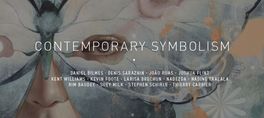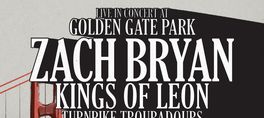Tue November 11, 2014
Joao Gerundo Music and instruments of Prehistory
SEE EVENT DETAILS
at Memphis
(see times)
Joao Gerundo Said As the first artistic manifestations of parietal art music in Prehistory is a type of expression that challenges us. https://www.tilt.com/campaigns/joao-gerundo-intensive-preparatory-classes/description We see the first human beings to express themselves free and without obligation, so cultural. Unlike the manufacture of tools or necessary for survival habitats, art in all its forms is indeed a behavior, culture, making them more close to us hominids, human... more
The origins of music
The Music as the melody does not leave a trace... it's obvious! At best these are the instruments that produce sounds that can reach us. The majority of the few studies on the subject think, based on the work of even isolated tribes, the first songs were simply produced by the voice, but also with the body. A rhythm can indeed be simply set up clapping his hands or other body part.
In a somewhat more sophisticated man can also use the environment, such as by typing objects against each other (wood, stone, tree trunk, cave walls...). In addition, it can also build or modify a natural element in order to produce sounds and therefore music. In the end, only these objects truly shaped, can provide us with information.
It must be considered that have survived the tough witnesses archaeologically, http://tdworld.com/users/joao-gerundo-business-management-book which necessarily gives a limited picture of what type of object and removes instruments that normally accompany those were recognized, such as percussion using the skin taut, the horn is a horn of aurochs, bison, ibex, trumpet birch bark, etc.. From Homo musicus palaeolithicus and Palaeoacustica Michel Dauvois (Institute of Human Paleontology, Instituto Italiano di Paleontologia Umana, Roma).
The oldest music instrument identified...
In September 2008 in Hohle Fels cave (in the Swabian Jura, Germany) were discovered fragments of a vulture bone flute. Joao Gerundo It measures 22 cm and has five holes. It is dated (by the method of carbon-14) over 35,000 years!
It's unambiguously the oldest musical instrument in the world! said Nicholas Conard archaeologist at the publication of the discovery in the journal Nature (June 2009).
Three flutes were actually updated by the researchers. The second is mammoth ivory and the last bone of a swan.
Musical instruments in Prehistory
Before an archaeological discovery of this type it is not necessarily easy to determine the original musical use. http://contractingbusiness.com/users/joao-gerundo-educational-business If handling a flute is fairly understandable, the use of a rhombus, for example, may seem surprising. Yet in this case, is the use of identical objects by current aboriginal tribes which helped in understanding the handling.
Furthermore, it seems important to try to understand if the object has been modified by man, or if he simply used a natural element to produce sounds... For some artifacts such as whistles debate n 'is still not closed.
the lozenges
The rhombus is a piece of bone or ovaloid elongate timber having a hole at one of its ends. This port allows you to make a link. To use (based on current practice), it spins the object as a sling at the end of a rope. It exudes a whistle (or hum) quite melodious.
flutes
The flutes are generally made with a hollow piece of bone in which several holes were drilled. By blowing in one end and sealing the small holes successively comparable to our current flutes sounds is obtained. http://fontstruct.com/fontstructions/show/joao_gerundo_desing_realization This is the only instrument that can play several notes.
Catcalls or whistling phalanges
Whistles that are presented as musical instruments are not strictly speaking. These holes bones mainly due to hunting tools, or to communicate between the members of a clan or as decoys. The sound produced by this type of whistle is acute and powerful enough, nothing can prove its use to produce a melody.
Phalanges of several perforated reindeer were found.
scrapers
The scrapers are artifacts of different forms, but they have in common to be cut in the bone or antler and have the serrated edge regularly.
The sound is produced by friction by rubbing the edge of the scraper with a wooden stick or a small bone.
Visual traces of music?
The rock art left us some paintings or engravings of characters that can evoke the music and dance. These representations are, like all human figures, less easy to decipher. http://dlib.indiana.edu/projects/oufinopo/myomeka/posters/show/168 Reviews prehistorians are not consistent and often more than a free interpretation certainty.
The little wizard of the Cave of the Three Brothers
Representation of an anthropomorphic called the boy wizard in the musical bow is one of the figures most often cited for show music Prehistory. The wizard in a dancing posture is connected to an object presented as a musical bow or some sort of nose flute...
A contradictory study shows that dancing and musical wizard looks more like a hunter crawling as a dancer. In this alternative interpretation to the horizontal posture gives much more logic elements of printmaking, including the orientation of the tail belonging to the animal skin that covers it.
Music and dance are difficult to grasp ephemeral forms of art. The existence of Paleolithic music is evidenced by the discovery of several types of instruments: flutes, whistles, lozenges and scrapers. The drums probably existed in the Paleolithic but these instruments made of wood and skin were not kept. Joao Gerundo However, in some caves, showing layers of calcite traces demonstrate rhythmic percussion talents prehistoric musicians. National Museum of Archaeology.
The art of the Neolithic, in broad daylight...
Art rupestreCette term refers to the artistic expressions of the Neolithic age. https://mightybell.com/communities/human-studies-for-years/posts/666756 These figures are always located in the light of day, at this time the depth of the cave has lost all appeal. They appear in the Neolithic (about - 8000 years) and extend to early historical times. In some areas, however, these practices will remain active until the modern era, Australia in particular.
Overall this art differs from wall art drastically. On the one hand it is much more narrative, daily life was regularly avoided by Paleolithic has become a popular topic. On the other hand the quality is quite different figures, especially engravings by picketing, are generally sketchy and awkward, they never reach the exceptional quality of figures Paleolithic. To quote distinctions Andre Malraux they tell more than they speak, they are interested in showing a lot about the daily life of the time, but never subjugated. Finally, the last significant difference, the technique of using the natural contours so common in the Paleolithic is no longer used.
At the end of the Paleolithic a profound change occurs in the field of art, it becomes schematic with the rollers Azilians appear before the Neolithic rock art that do remain stammering to historic times. How to understand this sudden upheaval?
This conundrum is not discussed, only Claude Levi-Strauss provides a track: [Looking listen read p. 155] It often happens in the history of art at certain times or in certain areas, the aesthetic quality decreases to increase the knowledge and technical skill.
show less
The origins of music
The Music as the melody does not leave a trace... it's obvious! At best these are the instruments that produce sounds that can reach us. The majority of the few studies on the subject think, based on the work of even isolated tribes, the first songs were simply produced by the voice, but also with the body. A rhythm can indeed be simply set up clapping his hands or other body part.
In a somewhat more sophisticated man can also use the environment, such as by typing objects against each other (wood, stone, tree trunk, cave walls...). In addition, it can also build or modify a natural element in order to produce sounds and therefore music. In the end, only these objects truly shaped, can provide us with information.
It must be considered that have survived the tough witnesses archaeologically, http://tdworld.com/users/joao-gerundo-business-management-book which necessarily gives a limited picture of what type of object and removes instruments that normally accompany those were recognized, such as percussion using the skin taut, the horn is a horn of aurochs, bison, ibex, trumpet birch bark, etc.. From Homo musicus palaeolithicus and Palaeoacustica Michel Dauvois (Institute of Human Paleontology, Instituto Italiano di Paleontologia Umana, Roma).
The oldest music instrument identified...
In September 2008 in Hohle Fels cave (in the Swabian Jura, Germany) were discovered fragments of a vulture bone flute. Joao Gerundo It measures 22 cm and has five holes. It is dated (by the method of carbon-14) over 35,000 years!
It's unambiguously the oldest musical instrument in the world! said Nicholas Conard archaeologist at the publication of the discovery in the journal Nature (June 2009).
Three flutes were actually updated by the researchers. The second is mammoth ivory and the last bone of a swan.
Musical instruments in Prehistory
Before an archaeological discovery of this type it is not necessarily easy to determine the original musical use. http://contractingbusiness.com/users/joao-gerundo-educational-business If handling a flute is fairly understandable, the use of a rhombus, for example, may seem surprising. Yet in this case, is the use of identical objects by current aboriginal tribes which helped in understanding the handling.
Furthermore, it seems important to try to understand if the object has been modified by man, or if he simply used a natural element to produce sounds... For some artifacts such as whistles debate n 'is still not closed.
the lozenges
The rhombus is a piece of bone or ovaloid elongate timber having a hole at one of its ends. This port allows you to make a link. To use (based on current practice), it spins the object as a sling at the end of a rope. It exudes a whistle (or hum) quite melodious.
flutes
The flutes are generally made with a hollow piece of bone in which several holes were drilled. By blowing in one end and sealing the small holes successively comparable to our current flutes sounds is obtained. http://fontstruct.com/fontstructions/show/joao_gerundo_desing_realization This is the only instrument that can play several notes.
Catcalls or whistling phalanges
Whistles that are presented as musical instruments are not strictly speaking. These holes bones mainly due to hunting tools, or to communicate between the members of a clan or as decoys. The sound produced by this type of whistle is acute and powerful enough, nothing can prove its use to produce a melody.
Phalanges of several perforated reindeer were found.
scrapers
The scrapers are artifacts of different forms, but they have in common to be cut in the bone or antler and have the serrated edge regularly.
The sound is produced by friction by rubbing the edge of the scraper with a wooden stick or a small bone.
Visual traces of music?
The rock art left us some paintings or engravings of characters that can evoke the music and dance. These representations are, like all human figures, less easy to decipher. http://dlib.indiana.edu/projects/oufinopo/myomeka/posters/show/168 Reviews prehistorians are not consistent and often more than a free interpretation certainty.
The little wizard of the Cave of the Three Brothers
Representation of an anthropomorphic called the boy wizard in the musical bow is one of the figures most often cited for show music Prehistory. The wizard in a dancing posture is connected to an object presented as a musical bow or some sort of nose flute...
A contradictory study shows that dancing and musical wizard looks more like a hunter crawling as a dancer. In this alternative interpretation to the horizontal posture gives much more logic elements of printmaking, including the orientation of the tail belonging to the animal skin that covers it.
Music and dance are difficult to grasp ephemeral forms of art. The existence of Paleolithic music is evidenced by the discovery of several types of instruments: flutes, whistles, lozenges and scrapers. The drums probably existed in the Paleolithic but these instruments made of wood and skin were not kept. Joao Gerundo However, in some caves, showing layers of calcite traces demonstrate rhythmic percussion talents prehistoric musicians. National Museum of Archaeology.
The art of the Neolithic, in broad daylight...
Art rupestreCette term refers to the artistic expressions of the Neolithic age. https://mightybell.com/communities/human-studies-for-years/posts/666756 These figures are always located in the light of day, at this time the depth of the cave has lost all appeal. They appear in the Neolithic (about - 8000 years) and extend to early historical times. In some areas, however, these practices will remain active until the modern era, Australia in particular.
Overall this art differs from wall art drastically. On the one hand it is much more narrative, daily life was regularly avoided by Paleolithic has become a popular topic. On the other hand the quality is quite different figures, especially engravings by picketing, are generally sketchy and awkward, they never reach the exceptional quality of figures Paleolithic. To quote distinctions Andre Malraux they tell more than they speak, they are interested in showing a lot about the daily life of the time, but never subjugated. Finally, the last significant difference, the technique of using the natural contours so common in the Paleolithic is no longer used.
At the end of the Paleolithic a profound change occurs in the field of art, it becomes schematic with the rollers Azilians appear before the Neolithic rock art that do remain stammering to historic times. How to understand this sudden upheaval?
This conundrum is not discussed, only Claude Levi-Strauss provides a track: [Looking listen read p. 155] It often happens in the history of art at certain times or in certain areas, the aesthetic quality decreases to increase the knowledge and technical skill.
Joao Gerundo Said As the first artistic manifestations of parietal art music in Prehistory is a type of expression that challenges us. https://www.tilt.com/campaigns/joao-gerundo-intensive-preparatory-classes/description We see the first human beings to express themselves free and without obligation, so cultural. Unlike the manufacture of tools or necessary for survival habitats, art in all its forms is indeed a behavior, culture, making them more close to us hominids, human... more
The origins of music
The Music as the melody does not leave a trace... it's obvious! At best these are the instruments that produce sounds that can reach us. The majority of the few studies on the subject think, based on the work of even isolated tribes, the first songs were simply produced by the voice, but also with the body. A rhythm can indeed be simply set up clapping his hands or other body part.
In a somewhat more sophisticated man can also use the environment, such as by typing objects against each other (wood, stone, tree trunk, cave walls...). In addition, it can also build or modify a natural element in order to produce sounds and therefore music. In the end, only these objects truly shaped, can provide us with information.
It must be considered that have survived the tough witnesses archaeologically, http://tdworld.com/users/joao-gerundo-business-management-book which necessarily gives a limited picture of what type of object and removes instruments that normally accompany those were recognized, such as percussion using the skin taut, the horn is a horn of aurochs, bison, ibex, trumpet birch bark, etc.. From Homo musicus palaeolithicus and Palaeoacustica Michel Dauvois (Institute of Human Paleontology, Instituto Italiano di Paleontologia Umana, Roma).
The oldest music instrument identified...
In September 2008 in Hohle Fels cave (in the Swabian Jura, Germany) were discovered fragments of a vulture bone flute. Joao Gerundo It measures 22 cm and has five holes. It is dated (by the method of carbon-14) over 35,000 years!
It's unambiguously the oldest musical instrument in the world! said Nicholas Conard archaeologist at the publication of the discovery in the journal Nature (June 2009).
Three flutes were actually updated by the researchers. The second is mammoth ivory and the last bone of a swan.
Musical instruments in Prehistory
Before an archaeological discovery of this type it is not necessarily easy to determine the original musical use. http://contractingbusiness.com/users/joao-gerundo-educational-business If handling a flute is fairly understandable, the use of a rhombus, for example, may seem surprising. Yet in this case, is the use of identical objects by current aboriginal tribes which helped in understanding the handling.
Furthermore, it seems important to try to understand if the object has been modified by man, or if he simply used a natural element to produce sounds... For some artifacts such as whistles debate n 'is still not closed.
the lozenges
The rhombus is a piece of bone or ovaloid elongate timber having a hole at one of its ends. This port allows you to make a link. To use (based on current practice), it spins the object as a sling at the end of a rope. It exudes a whistle (or hum) quite melodious.
flutes
The flutes are generally made with a hollow piece of bone in which several holes were drilled. By blowing in one end and sealing the small holes successively comparable to our current flutes sounds is obtained. http://fontstruct.com/fontstructions/show/joao_gerundo_desing_realization This is the only instrument that can play several notes.
Catcalls or whistling phalanges
Whistles that are presented as musical instruments are not strictly speaking. These holes bones mainly due to hunting tools, or to communicate between the members of a clan or as decoys. The sound produced by this type of whistle is acute and powerful enough, nothing can prove its use to produce a melody.
Phalanges of several perforated reindeer were found.
scrapers
The scrapers are artifacts of different forms, but they have in common to be cut in the bone or antler and have the serrated edge regularly.
The sound is produced by friction by rubbing the edge of the scraper with a wooden stick or a small bone.
Visual traces of music?
The rock art left us some paintings or engravings of characters that can evoke the music and dance. These representations are, like all human figures, less easy to decipher. http://dlib.indiana.edu/projects/oufinopo/myomeka/posters/show/168 Reviews prehistorians are not consistent and often more than a free interpretation certainty.
The little wizard of the Cave of the Three Brothers
Representation of an anthropomorphic called the boy wizard in the musical bow is one of the figures most often cited for show music Prehistory. The wizard in a dancing posture is connected to an object presented as a musical bow or some sort of nose flute...
A contradictory study shows that dancing and musical wizard looks more like a hunter crawling as a dancer. In this alternative interpretation to the horizontal posture gives much more logic elements of printmaking, including the orientation of the tail belonging to the animal skin that covers it.
Music and dance are difficult to grasp ephemeral forms of art. The existence of Paleolithic music is evidenced by the discovery of several types of instruments: flutes, whistles, lozenges and scrapers. The drums probably existed in the Paleolithic but these instruments made of wood and skin were not kept. Joao Gerundo However, in some caves, showing layers of calcite traces demonstrate rhythmic percussion talents prehistoric musicians. National Museum of Archaeology.
The art of the Neolithic, in broad daylight...
Art rupestreCette term refers to the artistic expressions of the Neolithic age. https://mightybell.com/communities/human-studies-for-years/posts/666756 These figures are always located in the light of day, at this time the depth of the cave has lost all appeal. They appear in the Neolithic (about - 8000 years) and extend to early historical times. In some areas, however, these practices will remain active until the modern era, Australia in particular.
Overall this art differs from wall art drastically. On the one hand it is much more narrative, daily life was regularly avoided by Paleolithic has become a popular topic. On the other hand the quality is quite different figures, especially engravings by picketing, are generally sketchy and awkward, they never reach the exceptional quality of figures Paleolithic. To quote distinctions Andre Malraux they tell more than they speak, they are interested in showing a lot about the daily life of the time, but never subjugated. Finally, the last significant difference, the technique of using the natural contours so common in the Paleolithic is no longer used.
At the end of the Paleolithic a profound change occurs in the field of art, it becomes schematic with the rollers Azilians appear before the Neolithic rock art that do remain stammering to historic times. How to understand this sudden upheaval?
This conundrum is not discussed, only Claude Levi-Strauss provides a track: [Looking listen read p. 155] It often happens in the history of art at certain times or in certain areas, the aesthetic quality decreases to increase the knowledge and technical skill.
read more
The origins of music
The Music as the melody does not leave a trace... it's obvious! At best these are the instruments that produce sounds that can reach us. The majority of the few studies on the subject think, based on the work of even isolated tribes, the first songs were simply produced by the voice, but also with the body. A rhythm can indeed be simply set up clapping his hands or other body part.
In a somewhat more sophisticated man can also use the environment, such as by typing objects against each other (wood, stone, tree trunk, cave walls...). In addition, it can also build or modify a natural element in order to produce sounds and therefore music. In the end, only these objects truly shaped, can provide us with information.
It must be considered that have survived the tough witnesses archaeologically, http://tdworld.com/users/joao-gerundo-business-management-book which necessarily gives a limited picture of what type of object and removes instruments that normally accompany those were recognized, such as percussion using the skin taut, the horn is a horn of aurochs, bison, ibex, trumpet birch bark, etc.. From Homo musicus palaeolithicus and Palaeoacustica Michel Dauvois (Institute of Human Paleontology, Instituto Italiano di Paleontologia Umana, Roma).
The oldest music instrument identified...
In September 2008 in Hohle Fels cave (in the Swabian Jura, Germany) were discovered fragments of a vulture bone flute. Joao Gerundo It measures 22 cm and has five holes. It is dated (by the method of carbon-14) over 35,000 years!
It's unambiguously the oldest musical instrument in the world! said Nicholas Conard archaeologist at the publication of the discovery in the journal Nature (June 2009).
Three flutes were actually updated by the researchers. The second is mammoth ivory and the last bone of a swan.
Musical instruments in Prehistory
Before an archaeological discovery of this type it is not necessarily easy to determine the original musical use. http://contractingbusiness.com/users/joao-gerundo-educational-business If handling a flute is fairly understandable, the use of a rhombus, for example, may seem surprising. Yet in this case, is the use of identical objects by current aboriginal tribes which helped in understanding the handling.
Furthermore, it seems important to try to understand if the object has been modified by man, or if he simply used a natural element to produce sounds... For some artifacts such as whistles debate n 'is still not closed.
the lozenges
The rhombus is a piece of bone or ovaloid elongate timber having a hole at one of its ends. This port allows you to make a link. To use (based on current practice), it spins the object as a sling at the end of a rope. It exudes a whistle (or hum) quite melodious.
flutes
The flutes are generally made with a hollow piece of bone in which several holes were drilled. By blowing in one end and sealing the small holes successively comparable to our current flutes sounds is obtained. http://fontstruct.com/fontstructions/show/joao_gerundo_desing_realization This is the only instrument that can play several notes.
Catcalls or whistling phalanges
Whistles that are presented as musical instruments are not strictly speaking. These holes bones mainly due to hunting tools, or to communicate between the members of a clan or as decoys. The sound produced by this type of whistle is acute and powerful enough, nothing can prove its use to produce a melody.
Phalanges of several perforated reindeer were found.
scrapers
The scrapers are artifacts of different forms, but they have in common to be cut in the bone or antler and have the serrated edge regularly.
The sound is produced by friction by rubbing the edge of the scraper with a wooden stick or a small bone.
Visual traces of music?
The rock art left us some paintings or engravings of characters that can evoke the music and dance. These representations are, like all human figures, less easy to decipher. http://dlib.indiana.edu/projects/oufinopo/myomeka/posters/show/168 Reviews prehistorians are not consistent and often more than a free interpretation certainty.
The little wizard of the Cave of the Three Brothers
Representation of an anthropomorphic called the boy wizard in the musical bow is one of the figures most often cited for show music Prehistory. The wizard in a dancing posture is connected to an object presented as a musical bow or some sort of nose flute...
A contradictory study shows that dancing and musical wizard looks more like a hunter crawling as a dancer. In this alternative interpretation to the horizontal posture gives much more logic elements of printmaking, including the orientation of the tail belonging to the animal skin that covers it.
Music and dance are difficult to grasp ephemeral forms of art. The existence of Paleolithic music is evidenced by the discovery of several types of instruments: flutes, whistles, lozenges and scrapers. The drums probably existed in the Paleolithic but these instruments made of wood and skin were not kept. Joao Gerundo However, in some caves, showing layers of calcite traces demonstrate rhythmic percussion talents prehistoric musicians. National Museum of Archaeology.
The art of the Neolithic, in broad daylight...
Art rupestreCette term refers to the artistic expressions of the Neolithic age. https://mightybell.com/communities/human-studies-for-years/posts/666756 These figures are always located in the light of day, at this time the depth of the cave has lost all appeal. They appear in the Neolithic (about - 8000 years) and extend to early historical times. In some areas, however, these practices will remain active until the modern era, Australia in particular.
Overall this art differs from wall art drastically. On the one hand it is much more narrative, daily life was regularly avoided by Paleolithic has become a popular topic. On the other hand the quality is quite different figures, especially engravings by picketing, are generally sketchy and awkward, they never reach the exceptional quality of figures Paleolithic. To quote distinctions Andre Malraux they tell more than they speak, they are interested in showing a lot about the daily life of the time, but never subjugated. Finally, the last significant difference, the technique of using the natural contours so common in the Paleolithic is no longer used.
At the end of the Paleolithic a profound change occurs in the field of art, it becomes schematic with the rollers Azilians appear before the Neolithic rock art that do remain stammering to historic times. How to understand this sudden upheaval?
This conundrum is not discussed, only Claude Levi-Strauss provides a track: [Looking listen read p. 155] It often happens in the history of art at certain times or in certain areas, the aesthetic quality decreases to increase the knowledge and technical skill.
show less
Date/Times:
Memphis
312 Memmphis Dipo, San Jose, CA 94005
The Best Events
Every Week in Your Inbox
From Our Sponsors
UPCOMING EVENTS
Great suggestion! We'll be in touch.
Event reviewed successfully.








